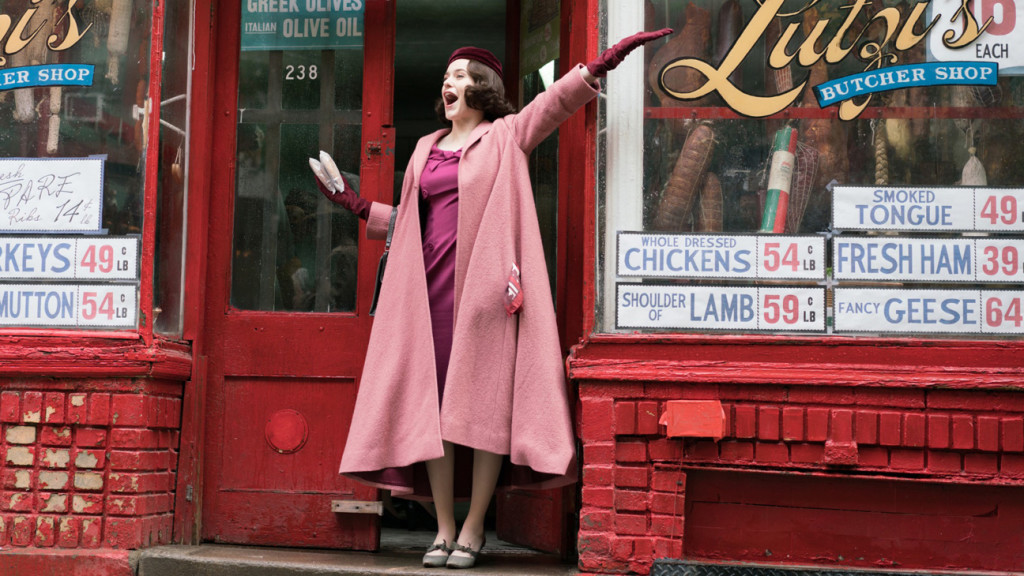 The pilot episode for “The Marvelous Mrs. Maisel” (Amazon, streaming) is so fresh and entertaining, I almost started tearing up my (premature, yet due tomorrow) Year End Top 10 list.
The pilot episode for “The Marvelous Mrs. Maisel” (Amazon, streaming) is so fresh and entertaining, I almost started tearing up my (premature, yet due tomorrow) Year End Top 10 list.
It stars Rachel Brosnahan, who was such a standout in “House of Cards,” now doing something completely different – a wisecracking, well-appointed Upper West Side housewife, helping her husband’s hopeless dream to become a standup comic.
His first mistake: He lifts most of his routine from Bob Newhart. His second mistake: He leaves his wife by the end of the episode. This inspires the wife, Midge, to get drunk, get on stage and say what she feels — which turns out to both be the funniest thing anybody had ever heard in nightclub and the first thing to get her arrested. Bonus: She gets the attention of Lenny Bruce, who is pretty much doing the same thing.
This is all wonderful material for Amy Sherman-Palladino who animated “Gilmore Girls” and then “Bunheads” with her nonstop dialogue. With Amazon money, she gets to remake 1950s New York so lovingly, “Mad Men” production designers would drool. The costumes and decor are to die for. And it’s a splendid cast surrounding Brosnahan, including the terrific Alex Borstein, who should have gotten an Emmy for “Getting On,” Tony Shalhoub, who did get Emmys for “Monk.” And Luke Kirby does a low-key and convincing version of Bruce.
The pilot episode, dangled out as far as last March on Amazon, was one of its most positively received ever. And there’s no reason it shouldn’t have been. You should watch it.
But when it gets to episode two, all of the excesses of Sherman-Palladino’s writing comes to the fore. There’s no throttle on her typewriter and just about every one of her characters talks and talks and talks so much; so fast and so annoyingly, that the other character in the scene invariably bursts out, “Will you shut up already?”
This makes for not only unrealistic characters (really? Everybody talks the same?) but for a very similar reaction in viewers (well, me, anyway). If people loved this manic screwball-comedy feel in “Gilmore Girls,” I guess and they’ll probably love it here. But while she was open for some editing and some tamping down in the successful first episode, it seems to all go out the window for subsequent episodes.
Also, the timing begins to be unsteady. By four episodes Midge is not much closer to becoming a standup though she manages to stumble onto the stage a couple of times to great acclaim (and further arrest). Things slow down with flashbacks and long scenes that don’t always help move the narrative.
If there’s a strange thing about Midge it’s that she’s perfectly appointed in her regular life but suddenly swears like a sailor on stage, which not only sets her apart from other comics, but just about everybody else in the story.
Sherman-Paladino is clearly freed by the non-network format to let go not only in language but in nudity was well. One could only imagine what Stars Hollow would have been if “Gilmore Girls” were that unrestricted (I’m guessing a strip club on the green).
With music in part by Sam Phillips, it has a lot of well chosen 50s music in the soundtrack (and oddly incongruous 80s music in the credits).
And everything about the visual production is delectable down to the cinematography.
It makes me want to watch the rest of it too. But maybe with the volume way down.